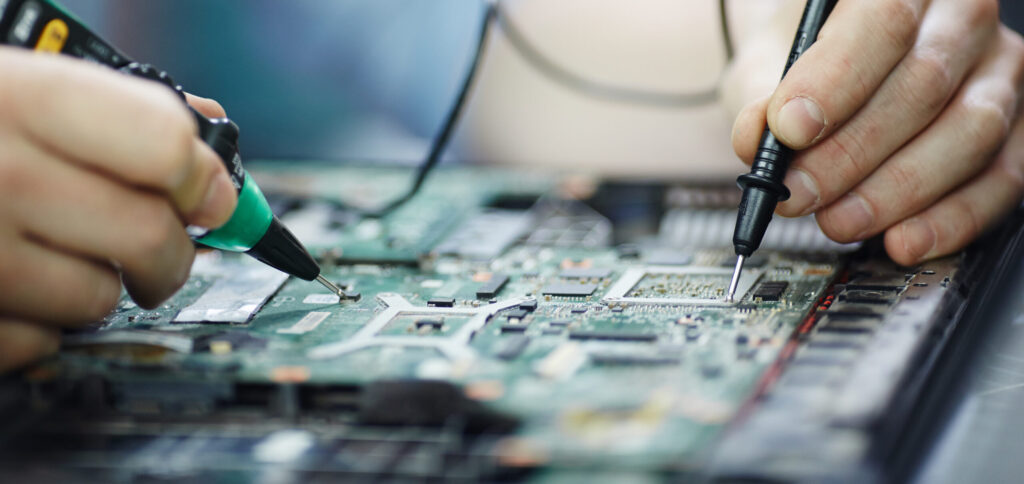E-waste Managementis recycling the Electronic waste.
In today’s tech-driven world, our love for electronic gadgets has reached unprecedented heights. However, the dark side of this tech frenzy is the mounting issue of electronic waste, or e-waste. Rapid advancements in technology have made our gadgets obsolete faster than ever, resulting in an alarming increase in discarded electronic products. E-waste encompasses a wide array of devices, including computers, monitors, smartphones, refrigerators, and more, and improper disposal can spell trouble for the environment and public health.
Understanding E-Waste:
E-waste comprises discarded electronic and electrical equipment that is no longer fit for its intended use or has reached its expiration date. The list of e-waste items is extensive, from computers and smartphones to televisions and air conditioners. The pace of technological innovation coupled with our penchant for the latest and greatest gadgets has accelerated e-waste generation. It’s no longer a surprise when we ditch our old devices for newer models, a trend that has significantly shortened the lifespan of electronic products.
E-waste typically contains valuable materials like metals and plastics, which, if extracted scientifically, could be recycled. However, the presence of hazardous materials such as mercury, lead, and cadmium poses a significant threat to the environment. E-waste isn’t just a concern; it’s a ticking time bomb for humans, animals, and ecosystems alike.
The Global E-Waste Quandary:
Across the globe, e-waste has grown into a colossal problem. International agreements like the Basel Convention have sought to regulate the movement of hazardous waste between nations. However, illegal shipments and e-waste dumping persist. Astonishingly, around 50 million tonnes of e-waste was generated globally in 2018, with personal devices like computers, smartphones, and TVs accounting for half. Sadly, only 20% of this e-waste is recycled annually, leaving a staggering 40 million tonnes to be either incinerated or illicitly managed.
In India, the e-waste situation is dire, with the country ranking as one of the top producers globally. Unfortunately, less than 2% of the e-waste generated in India is formally recycled. The country also imports substantial amounts of e-waste, leading to issues like groundwater contamination, health problems, and more. The unorganized sector plays a significant role in e-waste collection, but it’s an area lacking regulation.
Opportunities for E-Waste Management
There’s hope on the horizon, though. The Ministry of Environment, Forest, and Climate Change rolled out the E-Waste (Management) Rules in 2016, introducing the concept of Extended Producer Responsibility (EPR). EPR makes producers liable for collecting a portion of the e-waste they create, encouraging them to be part of the solution.
To manage this rising crisis, governments, city administrations, and citizens all have vital roles to play. It’s essential that authorities collaborate with the industry to establish standard procedures and an organized approach to reduce e-waste. Proven models from other countries, such as South Korea’s success in recycling 21% of its e-waste, can offer valuable insights.
Design for Environment (DfE) is another promising concept gaining traction worldwide. However, its implementation has been subpar in India, emphasizing the need for improved implementation and monitoring.
Citizens can make a significant impact by properly disposing of e-waste, rather than tossing it out with regular waste or resorting to harmful practices like open burning. Some residential communities are already taking the initiative by providing separate bins for e-waste collection, a practice that others should adopt. Students and women’s Self-Help Groups (SHGs) can also play a role in e-waste management within their respective communities.
Concluding Thoughts:
E-waste management is an escalating challenge, especially in developing countries like India. The mounting public health risks necessitate immediate attention. Integrating the informal sector with the formal sector is crucial for effective control of e-waste’s environmental and human health impacts. Creating awareness, enhancing infrastructure, and implementing efficient collection and management practices are key steps.
Government initiatives like EPR, along with incentives for stakeholders, are vital for the successful recycling and disposal of e-waste. The rate at which e-waste is accumulating worldwide is alarming. To safeguard the environment and the well-being of all living organisms, the time to act is now.
